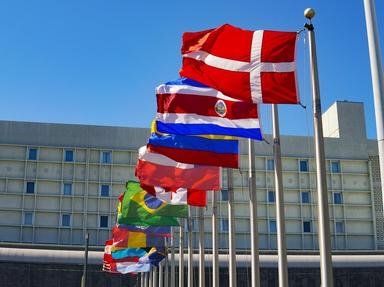
Ten More National Flags Went Into a Bar (Part II) Quiz
This story is about the flags of ten nations going into a bar and talking about themselves. Can you complete the story by filling in the blanks with the correct words from those given on the right?
by misstified.
Estimated time: 4 mins.